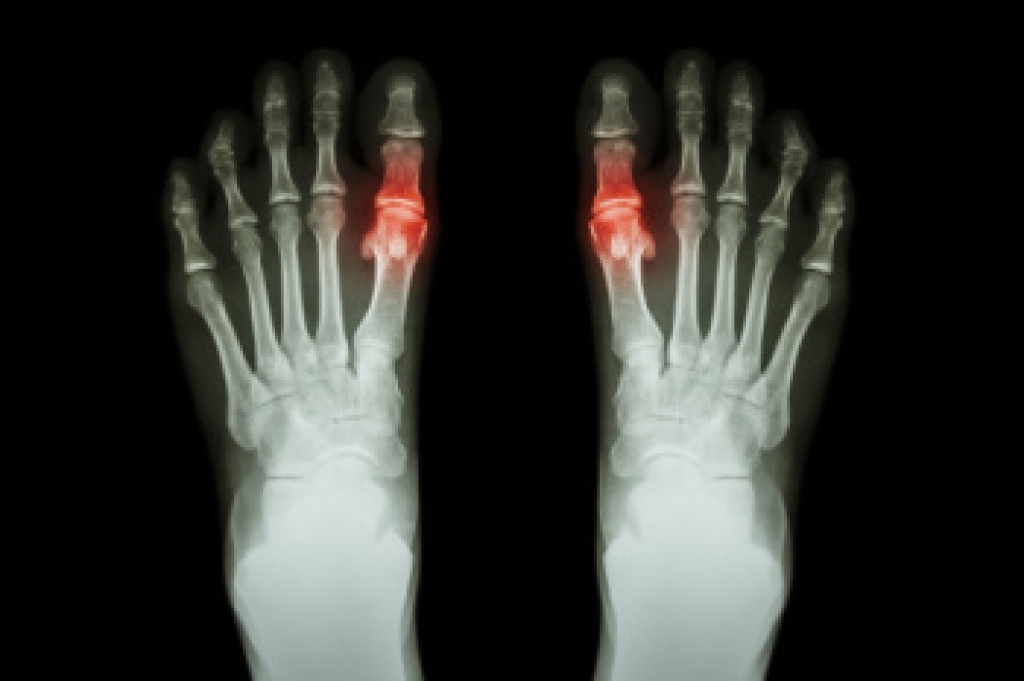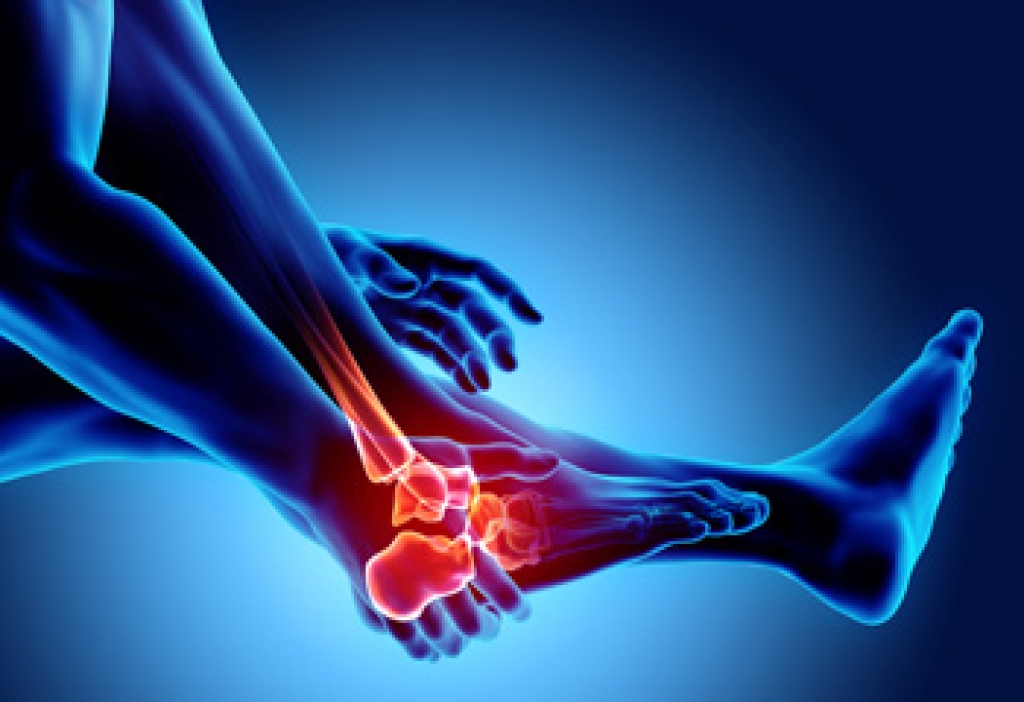
Gout is a form of inflammatory arthritis that often affects the feet, especially the big toe. It is caused by a buildup of uric acid in the blood, which forms sharp crystals in the joints. Common triggers include a diet high in purines, alcohol consumption, obesity, and certain medications or health conditions. Symptoms typically appear suddenly and may include intense pain, swelling, and warmth in the affected joint. The pain can be severe enough to wake someone from sleep, and may make walking or wearing shoes difficult. Visually, the joint may appear inflamed and extremely tender. A podiatrist can help diagnose gout through a physical examination, medical history, and possibly a fluid or blood test. Treatment options may include anti-inflammatory medications, dietary guidance, and long-term management strategies to prevent future flare-ups. A podiatrist can also help monitor joint health and manage ongoing discomfort. If you are dealing with gout, it is suggested that you schedule an appointment with a podiatrist to properly manage and treat this condition.
Gout is a foot condition that requires certain treatment and care. If you are seeking treatment, contact one of our podiatrists from East Ocean Podiatry . Our doctors will treat your foot and ankle needs.
What Is Gout?
Gout is a type of arthritis caused by a buildup of uric acid in the bloodstream. It often develops in the foot, especially the big toe area, although it can manifest in other parts of the body as well. Gout can make walking and standing very painful and is especially common in diabetics and the obese.
People typically get gout because of a poor diet. Genetic predisposition is also a factor. The children of parents who have had gout frequently have a chance of developing it themselves.
Gout can easily be identified by redness and inflammation of the big toe and the surrounding areas of the foot. Other symptoms include extreme fatigue, joint pain, and running high fevers. Sometimes corticosteroid drugs can be prescribed to treat gout, but the best way to combat this disease is to get more exercise and eat a better diet.
If you have any questions, please feel free to contact our office located in Deerfield Beach, FL . We offer the newest diagnostic and treatment technologies for all your foot care needs.




